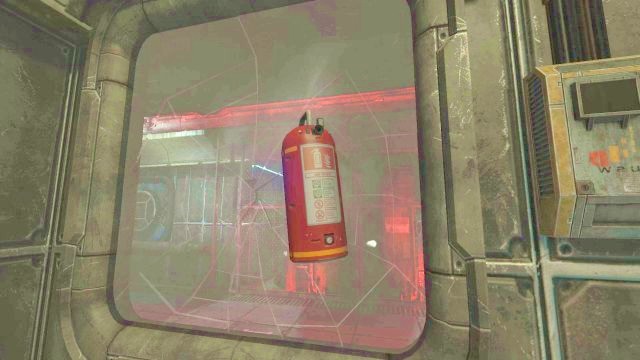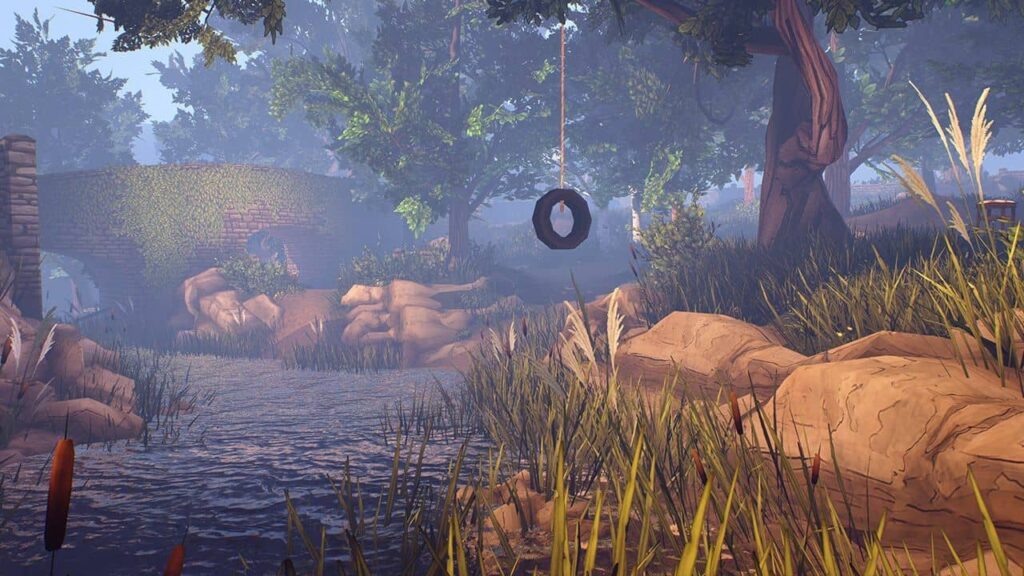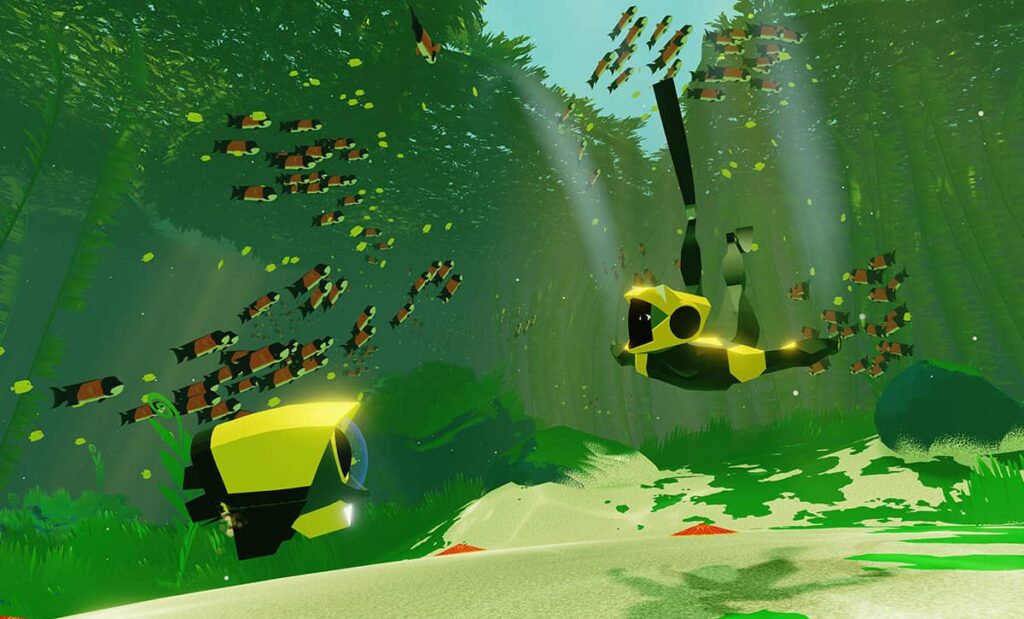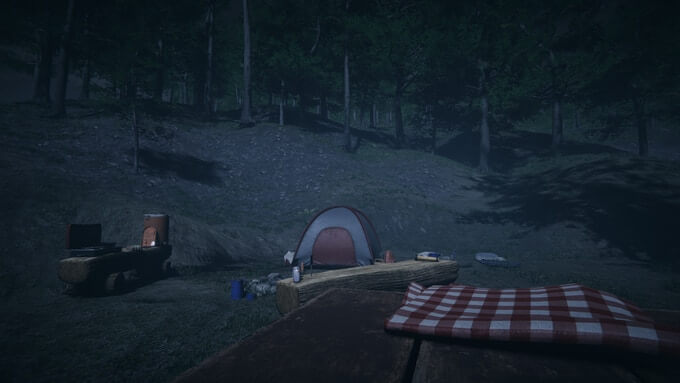I’m a big fan of Walking Simulators, but recommending them to people have always been a bit problematic.
I always get so frustrated when I try to convince someone to play a game like Firewatch.
Me, a connoisseur of fine gaming: “So in Firewatch, you get to explore a whole forest and talk with your coworker over the walkie-talkie”
A random clueless gamer: “What’s the shooting like? Are there any monsters or something like that? Do you level up and gain upgrades?”
Me: “Uhm, no. You just walk around and stuff”
Then I’d disappointingly watch them as they slowly pick up the controller to play their 1000th consecutive match of PUBG, pretending I don’t exist.
I’ve always found it weird that games like Gone Home and What Remains of Edith Finch rose in popularity the way they did. They had no right in being as popular and as big as they got, but their popularity assured me that I wasn’t the only one that enjoyed walking in videogames.

I always raised that question to myself when I’m trying to procrastinate doing literally anything that’s remotely productive. What is it about Walking Simulators that I find so fascinating?
Of Course it’s not the walking, or is it?
What first caught my eye about Gone Home is that I get to rummage through the drawers and closets of someone else’s house. This ability of uncovering someone’s dirty secrets by reading their diary or discovering their interests by exploring every nook and cranny in their bedrooms is an absolute delight for me.

I’d never do it in real life. I wouldn’t think it’s fun to break into your home and rummage through your trash looking for thrown out receipts, so don’t put out a restraining order on me just yet. However, in our favorite form of escapism, also known as gaming, it’s satisfying to interact with the environment like that.
Realistic Puzzles
Puzzles that let you think logically and realistically are a favorite of mine. I recall one such puzzle in Soma where the solution was to plug in a generator’s cable into a computer to turn it on, as simple as that. You might think to yourself that that’s way too simple and easy, but it’s not.

Videogames have programmed us in a way that always makes us think of the most illogical solutions ever in order to progress. Soma, and many other walking simulator games like it, got us thinking the same way we would in real life.
Another interesting situation is one where you have to pick up and throw a fire extinguisher through a room’s window to break it and get out.
Dream Logic
Soma’s approach to puzzle solving is my absolute favorite. What I hate the most though, are puzzles that use Dream Logic. Ether One is a game that absolutely nails Dream Logic in its puzzles. If you’re still confused and wondering what that is, then allow me to elaborate.

It’s a puzzle where the solution doesn’t challenge your logical reasoning, but rather your ability to think outside of the box. For example, in Ether one, at one point the solution was to close a door, simply because the game vaguely hinted at it. In another puzzle, your objective was to write down a certain brand of beer; you’ll find this brand’s name on a poster on the wall somewhere in the bar that you’re exploring. It’s such an uncanny approach to puzzle solving, and even though I wasn’t a big fan of it, I still appreciated Ether One for what it set out to do.
Walking Simulators where you can’t even walk
Abzû and Flower are both great examples of this. Both PS exclusives resemble in their structure a typical walking simulator, but minus the walking.
In Abzû, you spend the entirety of your playthrough swimming around, discovering the deep oceans and the creatures that inhabit them. Flower, on the other hand, lets you float around the world, controlling a wind that blows around a flower petal.

Both games feature a symbolic and abstract storyline, allowing the player to deduce their own conclusions surrounding the events of the games. Virginia is also another game that relies on an abstract storyline but with a slightly more realistic tone.
Another Great Walking Simulator, Virginia
In Virginia, you play as an FBI agent that’s investigating a case of missing persons, but things are never made clear, and the whole game feels like one big literal and figurative acid trip. With not a single word spoken (Since the game lacks any voice acting), it evokes so many powerful emotions. Adding to that the fact that underneath it all, a definite crime story is presented by the game’s hour or so of playtime, making it even better.

Now let’s switch gears and tackle on a true AAA gaming experience, Kojima’s Death Stranding.
Death Stranding is a Walking Simulator, right?
Death Stranding was one of the first AAA games to be branded by the waves of angry fans as a walking simulator. It was a connotation that was used in bad spirit; a walking simulator is by its definition, a “boring” game.
Surprisingly enough, those cries of outroars were severely misguided. Death Stranding is anything but a walking simulator. If we were to group it as such simply because it had a traversal element, then almost every open world game would be a walking simulator.
We made a poll on our Instagram page to see if our followers could give a clear answer on this debate. The result was, as expected, exactly 50/50. Half of the answers said that Death Stranding is indeed a walking simulator, while the other half said that it’s an entirely different genre.
Death Stranding had multiple features that had no right to be in a walking simulator game. Crafting, side quests, overencumberance, equipment’s’ durability, boss fights, even a few shooting sections. Walking Simulators are supposed to give you the freedom to walk around and explore at your own pace, which is the exact opposite of Death Stranding’s gameplay loop. The game’s always stressing you out with all the things that can go wrong during your deliveries.
If you’d like to read more about our thoughts on Death Stranding, read our article on how it defied all of our expectations and delivered one of the best gaming experiences I’ve had in the past few years.
Horror in Walking Simulators
If it weren’t for the popularity of this genre, we wouldn’t have some of the best horror games of this generation. Layers of Fear, Soma and if we’re pushing the definition even further, Outlast. Let’s talk about Layers of Fear first.

Playing Layers of Fear is like venturing into a twisted amusement park ride that’s set in a creepy house. You’re constantly on edge, looking over your shoulders, even though all you do in it is just walk. Each time you turn around or open a door, you never know what’s going to pop up in front of you. What it lacked in interactions with the environment, it more than made up for it with the way it twisted your surroundings.
Outlast
While in Outlast, the only thing you can interact with are the usual hiding places, beds to crawl under and closets to conceal yourself in. There isn’t much walking as there is running in outlast. However, there’s no denying that it still shares many similarities to the usual walking simulators. Besides running away from the baddies, the main thing you’ll be doing is exploring the cleverly designed Mt. Massive Asylum and the eerie town of Temple Gate.

Soma had the perfect mix of horror, exploration, puzzle solving, and hiding from the monsters. It didn’t hurt that it also features a plotline that will make you question your whole existence. It’s an absolute must play even if you’re not a fan of the genre.
Many of us grew up on the survival horror games, which emphasized combat as the basis for the scares themselves. Games like Resident Evil and Dead Space relied on the scarcity of resources, the sheer number of enemies and your character’s low health to deliver the scares.
That’s why a large percentage of people would consider Layers of Fear as a thriller or a walking simulator more than it is horror. I don’t agree with that nomenclature. In cinema, the plot moves forward, without any input from the viewer. Horror films are still horror films, despite us doing nothing to move that plotline forward.
Games such as Layers of Fear, Soma, Amnesia and Outlast, despite being combat-free, should still be considered as pure horror games. I shouldn’t be scared of restarting the game from the last checkpoint; I should be scared because the game delivers on its atmosphere and keeps me on edge.
A lot of up and coming independent developers had found their footing in walking simulators. At Ichiplayer, we’ve had the pleasure of working with an indie developer who’s developing such a game. Caught in Nowhere is an open world game filled with locations to explore and disturbing secrets to unfold.
Caught in Nowhere

Fabian Möller, the game’s developer, has taken inspiration from the usual open-world games that offers the players the ability to explore all of the interesting locations that the game’s world has to offer. He wanted to blend that aspect with the terrifying scares of a horror game. “Allowing them (The Players) to explore and be terrified at their own pace.” To put it in his own words.
Check out our preview of Caught in Nowhere, and feel free to visit its Kickstarter page. You can also try out the pre-alpha for yourself right here.
The reason for this surge in Indie developers working on Walking Simulators is due to the lack of complex gameplay mechanics required to make such a game. Usually individuals that are looking to tell a story rather than simply make a “fun” game are the ones that are creating these games.
For that alone, Walking Simulators should be more appreciated in the gaming industry. Simply for giving an outlet to creative people that are trying to establish gaming as a platform for storytelling rather than for mindless fun.
Silver Chains
Another indie game that we’ve had the pleasure of reviewing was Silver Chains. It was developed by a small team in the middle of the coldest city on earth. Despite the conditions that they had to work in, they still persevered and finished their game. Silver Chains clearly takes inspiration from many walking simulators and delivers a few scares in its 5-6 hours of playtime. Check out our review of it right here.

It All Depends On The Player
I understand your frustration with Walking Simulators. I understand that some people love videogames because they like to compete online. Others like to unwind and rip demons in half with a chainsaw. There’s a big chance that Walking Simulators aren’t for you, but please, do understand why they’re as popular as they are right now.
While they all have walking as a common mechanic, and that’s understandable since most games have that as well. Each of these unique games offer something that makes them special. From Soma’s existential storyline about consciousness, to Gone Home’s voyeuristic exploration of the titular house. Each of the games I’ve mentioned in this article has changed the way we perceive videogames. That’s why I consider Walking Simulators to be one of my absolute favorite genres of games.
